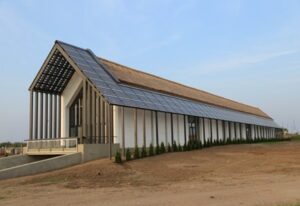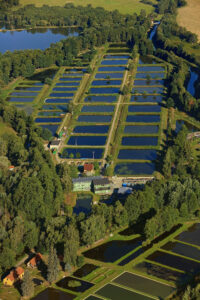The Czech Republic has become one of the founding countries of the newly established European research consortium DANUBIUS-ERIC
On 25 June 2025, the European Commission adopted a decision to establish the consortium of the European research infrastructure DANUBIUS-ERIC, which will manage the European research infrastructure DANUBIUS (International Centre for Advanced Studies on River-Sea Systems). The DANUBIUS-ERIC European research infrastructure consortium project brings together a total of 7 European countries: the Czech Republic, Italy, Moldova, the Netherlands, Austria, Romania, and the United Kingdom. The registered office of the DANUBIUS-ERIC consortium will be located in Romania, at the coordination centre in the town of Murighiol, situated directly in the Danube River Delta. DANUBIUS-ERIC is the first European research consortium to be based in Romania. The Czech Republic is involved in the consortium through the Ministry of Education, Youth and Sports and two national nodes: the large research infrastructures CENAKVA (operated by the University of South Bohemia) and CzeCOS (operated by the Global Change Research Institute of the Czech Academy of Sciences). DANUBIUS-ERIC is 21st ERIC with participation of the Czech Republic.

A view of the future central HUB site in Murighiol, Romania (Media Gallery – DANUBIUS-PP)
European Research Infrastructure DANUBIUS
The mission of DANUBIUS-ERIC is to enable excellent research within the river–sea system, to offer state-of-the-art research infrastructure, and to provide integrated knowledge necessary for the sustainable development and protection of aquatic ecosystems. The formal essence of the European research infrastructure DANUBIUS is a coordinated network of scientific institutions distributed across Europe. The management function will be carried out by the coordination centre located in Romanian Murighiol. Other important parts of the research infrastructure include the Data Centre based in Bucharest. The role of specialised centres providing equipment and services, storing and making data available, and access to experimental and measurement facilities will in the future be fulfilled by a set of nodes – for example, the analytical node, operating within the centre in Murighiol, or the observation node operated by the Marine Laboratory (PML) in Plymouth, southern England. Finally, the structure of DANUBIUS-ERIC is also composed of so-called Supersites. These are sites with significant scientific potential, serving as focal points for observation, comprehensive research, and modelling of river–sea systems. One such Supersite, named Hydrological Nexus of Central Europe, has been in operation since last year on the territory of the Czech Republic.

Pond facility of the CENAKVA Centre in Vodňany, South Bohemia (Jihočeská univerzita v Českých Budějovicích – centrum CENAKVA)
Czech Participation in DANUBIUS-ERIC
The Czech Republic was one of the first countries where the DANUBIUS European research infrastructure project received official support. Czech partners involved in the creation and operation of the future European research infrastructure DANUBIUS include the large research infrastructure CzeCOS, coordinated by the Global Change Research Institute of the Czech Academy of Sciences, and the University of South Bohemia in České Budějovice through the large research infrastructure CENAKVA. Both CzeCOS and CENAKVA offer capacities for excellent research on European river basins, which can be used within the Czech Supersite Hydrological Nexus of Central Europe. The unique role of the Czech Supersite is given by the location of the Czech Republic as a watershed of three seas and as the source area of several major European rivers. Thus, within DANUBIUS-ERIC, the Czech side participates in activities aimed at supporting top-level world interdisciplinary research and innovation in freshwater research.